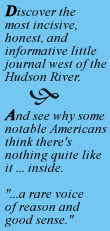Book Review
The Cambridge Apostles:
A History of Cambridge University’s Elite Intellectual Secret Society, by Richard Deacon. Farrar Straus & Giroux, 1986, 214 pp., $19.95.
Interest
in The Apostles, a secretive club of Cambridge University dons and
undergraduates, was aroused after the exposure of Anthony Blunt as leader of
a Soviet spy ring that included Guy Burgess and Donald Maclean (who defected
to the Soviet Union in 1951) and also the infamous H.A.R. (Kim) Philby. Their
point of connection was Cambridge, and a further connection was The Apostles,
to which Blunt and Burgess belonged, and to which it was alleged Maclean
belonged (although Richard Deacon finds nothing to suggest he did). Blunt’s
and Burgess’s homosexuality also figured into the luridness of the
reports: what was this cenacle of sodomites and traitors?
As
Richard Deacon makes clear, The Apostles—the Cambridge Conversazione
Society—was both more and less than this. In the atmosphere within
which it existed at Cambridge, heterodoxy and homosexuality flourished more
or less openly. Cambridge had long been hospitable to the evangelical or
low-church wing of the Church of England, and had sided with the Puritans
during the English civil war. The Calvinist doctrine of election (the notion
that certain individuals are predestined to be saved) easily metamorphoses
into gnosticism (the concept that an elect or elite can have a special and
superior insight into the purposes and ways of Deity) and antinomianism (the
belief that individuals so filled with grace are above the ordinary laws and
manners of society). It has a fondness for compulsory righteousness, as
evidenced by the rule of Calvin himself in Geneva, Cromwell in England, and the
Puritans in Massachusetts. Such views are tailor-made for the encouragement
of arrogant self-anointed elitism.
Single-sex
environments such as those involuntarily present in prisons and (in the past)
on shipboard, encourage homosexuality faute de mieux; environments that are
rigidly single-sex by choice (as the recent scandals in the Roman Catholic
church show) attract those who are homosexual by preference. Even though
Protestant in theology, the great English universities retained well into the
nineteenth century their monastic/clerical character, and were such
environments. Fellows of colleges (dons) were typically in holy orders, and
it was not until 1882 that Cambridge fellows were allowed to marry. Deacon
describes an atmosphere of misogyny which found open and ugly expression
amongst many homosexuals, who justified their behavior on the grounds that
men were superior to women, hence the love of one man for another was a
superior form of love to that of man for woman. Much classical learning has
been adduced to this point (see the twelfth volume of the Palatine
anthology). This constitutes the “Higher Sodomy” to which Deacon
devotes a chapter of his book. Conservative proponents of classical education
and single-sex schooling might well take cautionary note!
Communism
had many adherents at Cambridge, even in the late nineteenth century, and
reached an apogee in the between-the-wars period. British universities until
quite recently drew exclusively from the upper and upper-middle classes,
amongst whom trade and commerce were scorned as unworthy of the attentions of
gentlemen. Marxist hostility to capitalism found an oddly congenial fit with
this aristocratic disdain for business as an occupation. It also fit well
with Cambridge’s low-church enthusiasm for reforms involving shaking up
the social order and chucking out forms, manners, and institutions that
persisted out of longstanding custom. Santayana, speaking from the experience
of a proper Bostonian upbringing, remarked that liberalism was what remained
after Christianity had been excised from Calvinism, leaving only the
latter’s fanaticism. Such was the background of university leftism at
Cambridge.
The
Apostles refined and concentrated the expression of attitudes widely present
in the larger setting of Cambridge. To be sure, there were many Apostles who
were neither Communists nor homosexuals. Certainly very few were Soviet
spies. But those who were, were entirely predictable products of their
surroundings, nurtured and encouraged by the closed society of the Apostles.
I
discovered this book because of my interest in elites and their institutions.
Much that is in print on these subjects is conspiracy-theory claptrap,
typically from the point of view of one or the other political extremes.
Judeo-Masonic, Illuminati, Satanic plots abound in the screeds of right-wing
authors, while evil collusions amongst rich WASPy denizens of the Bohemian
Grove and Skull and Bones, who grow richer at the expense of the working
class, characterize the polemics of the left. Richard Deacon’s book
fits neither mould, realistically describing a secret society the members of
which influenced world events in a genuinely collusive fashion. Unlike the
participants in Bohemian High and Low Jinks, the Apostles did not meet for
just a few days each year, they lived together in a collegiate setting.
Unlike the Yalies of Skull and Bones, the Apostles numbered amongst their
active ranks numerous fellows (i.e., faculty members) as well as
undergraduates, some of whom were artists or intellectuals of the first rank,
like Alfred Lord Tennyson, Ludwig Wittgenstein, or John Maynard Keynes. Ideas
and their consequences, rather than crude fraternity stunts and pranks, were
of real interest to them.
Deacon’s
book is sometimes ill-digested and repetitive. Also some of its obiter dicta
raise fascinating unanswered questions. The papers delivered by members are
said to be placed, with formal ceremony, in a trunk called the Ark.
Christopher McIntosh, in his book The Rosicrucians (one of the few sane treatments of that subject)
says that in sixteenth-century Germany there existed an Orden der
Unzertrennlichen whose members stuidied alchemy. “[t]he results of
successful alchemical experiments were recorded and placed in an
‘Archa,’ a secret chest whose contents were continually being
added to.” The resemblance is striking, and it would be interesting to
know how much farther back than the nominal foundation of The Apostles in
1820 its customs and practices really go.
—Michael S. Swisher

[ Who We Are | Authors | Archive | Subscribtion | Search | Contact Us ]
© Copyright St.Croix Review 2002